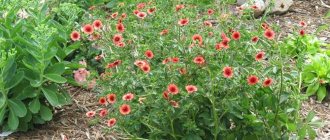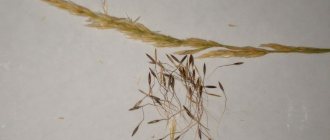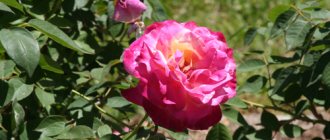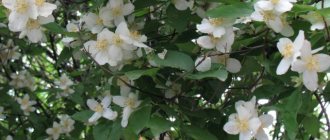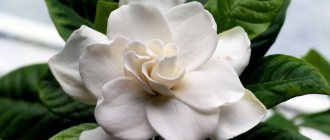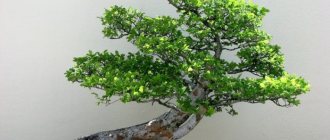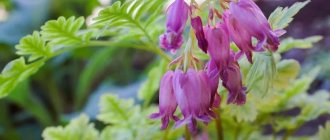0 4802
Thanks to our descriptions, you can choose the thuja that best fits into the landscape of your suburban area. Thuja is a shrub that does not require painstaking care, easily tolerates frost and is a real long-liver among plants in a flower garden or hedge.
Features of the plant
It is not for nothing that this evergreen shrub is called the tree of life - the thuja lives up to 150 years, or even more. The homeland of the thuja plant is the northern continent of America or East Asia. Thuja wood is a storehouse of essential oils, so it is not surprising that some types of this shrub were burned during pagan rituals as sacrifices to the gods.
Thuja has 5 species and more than 100 varieties. They differ in bark color, crown shape, height, and trunk diameter. In gardening, this evergreen shrub grows no higher than 11m. Young plants are decorated with soft, pale green needles. Thuja fruits are small oval cones with flat seeds that ripen in the first year.
Botanical description of the thuja tree
All thujas are evergreen trees with a pin-shaped (rounded-pyramidal) crown shape. The branches are flexible, spaced from the trunk or raised. The branches are more or less flattened. The bark is light brown, peeling off in patches. The fibrous bark of the giant thuja was used by the Indians for weaving and braiding ropes. When writing about all types of thuja, it is worth noting the value of their wood, which is resistant to rotting. Therefore, this raw material is widely used in the woodworking industry.
The needles of adult plants of natural forms are only scaly, pressed to the branches. The location of the needles is opposite. Seedlings always have needle-like needles; young plants and varietal varieties can have any type of needles, including mixed ones.
Male “flowers” are very small, single, apical, oval-round. Females are single, ovoid or oblong.
Look at the photo - the cones of the thuja tree are small, ovoid or oblong, with leathery, more or less revealing scales:
The seeds ripen in the first year, but the cones remain on the branches for at least two years.
All types of thuja are cold-resistant, but not all are frost-resistant enough. We want to draw your attention to the most winter-hardy species.
The following are photos and descriptions of popular types of thuja.
Planting thuja in open ground
Thuja trees and shrubs prefer light areas, but without direct sunlight for a long time. If you ignore this fact and plant the thuja on the sunny side without the ability to hide in the shade at midday, the plant will withstand winter frosts worse. In addition, thuja does not like drafts.
Thujas also have special soil preferences. They grow best in turf soil with the addition of peat and sand, but sandy loam, marshy soil or clay are also suitable.
You can plant shrubs in open ground in spring and autumn, but experts remind you that if you plant thuja in open ground in autumn, you risk losing the plant due to the fact that it will not have time to get stronger and, as a result, will not survive the winter.
If you doubt whether you dug a hole for planting of the right size, then here is a hint: the hole for the thuja should be 30 cm in height and 40 cm in width larger than the root system of the seedling taken with a lump of soil. As for the distance between seedlings, everything can be calculated here too:
- If you plan to plant thujas in a group, then the seedlings should be separated from each other at a distance of approximately ½ of the maximum possible width of the branched part of the bush. If the plant is crowded, it will begin to compete with each other and fight for space, sun and nutrients. To properly plant seedlings, find out the maximum crown size for a given variety. For example, the crown of the western thuja variety Brabant reaches 1.5 m in diameter.
- If you plan to plant thujas in a hedge, then follow the same principle - adapt the distance between seedlings to the size of adult shrubs. But in this case, to form a hedge, plant the plants closer to each other than with group plantings. You will get a dense wall of thujas if you plant 3-4 seedlings per 1 linear meter. For example, western thujas grow slowly, so it is recommended to plant them at a distance of 60cm from each other. If a small and weak specimen gets into a group planting, it will most likely be drowned out by healthier ones.
Thujas love areas that have been previously cleared of perennial weeds - nettles, thistles, weeds.
Pour soil into the bottom of the hole and mix it with manure or compost. Before planting, thuja roots should be kept in water until air bubbles stop rising to the surface of the water. Place the seedling in the center of the hole and carefully straighten the root system. Fill the hole with soil and compact it carefully. After planting, thuja should be watered generously, approximately two buckets per seedling (20 liters). When the water is absorbed, mulch the surface to slow down the evaporation of moisture from the soil and protect the root system of the thuja from heat or cold (to prevent the thuja from starting to rot, avoid getting mulch on the trunk and lower branches).
The most popular varieties
The TOP varieties annually include the beauties Smaragd, Brabant, Columna, and Reingold. But no less popular are the species that we have not yet named.
Ericoides
A fluffy compact version, up to 1 m in size. The branches of Ericoides are thin and spreading, so the bush requires regular formation. To maintain their shape, the branches are tied to the trunk for the winter - otherwise they may simply break under the snow.
Wagnery
An adult thuja resembles an egg. It grows up to 5 meters, while the diameter at the widest part can reach 250 cm. The needles are green, light-loving - in the shade they can lose density and color.
Vipcord
Folded thuja, loved by many gardeners for its unusual appearance. The shoots resemble thin wires or threads hanging from the center in different directions.
Despite its compact size (up to 30 cm), it easily tolerates frost and will remain a decoration of the site even in winter.
Elvangera golden
The capricious species of thuja comes from Germany: to preserve the beauty of the yellow needles, you should protect the tree from bright sun, severe frost or wind. The color is rich yellow, yellow-orange, the crown is cone-shaped.
Hosery
A miniature copy of the popular Globoza. Shape: egg or ball, height up to 1 meter. In winter, the crown can change color (it does not always do this), but does not lose its decorative effect.
Caring for thuja in the garden
Watering
Thuja loves abundant watering, especially in the first weeks after planting. Thujas also love sprinkling. This process allows the roots to become saturated with water and remove contaminants from the needles. The roots of the thuja are superficial, so loosen the soil no deeper than 10 cm.
Top dressing
Apply complex mineral fertilizers (for example, Kemira universal fertilizer 50-60g/1m2) in the spring.
If you have already applied fertilizers to the soil when planting, then the next fertilizing should be carried out only after two years.
Trimming
Thuja responds well to the pruning process and will repay you with splendor and density in response to this procedure. It is carried out when the bush reaches two to three years. Spring is the most favorable time of year for pruning. Shrubs growing as hedges especially need systematic pruning. Thinning and sanitary pruning are also necessary for single plants. If the thuja grows in a group planting, then formative pruning is used so that the bushes do not look sloppy. The crown of the thuja needs to be formed when the bush reaches the height you need. This is usually done for the first time in the spring and trimmed again in August/September. Some varieties of thuja need frequent shaping, but no more than a third of the stem at a time, so that the bush does not weaken. Use sharp pruning shears for pruning.
Transfer
It happens that you need to transplant an adult thuja. To make such a transplant easy for the plant, follow the following rules:
- Pierce the soil around the tree with a bayonet-shovel at a distance of half a meter from the trunk;
- Carefully pry up the plant and pull it out along with the trunk circle;
- Use a wheelbarrow to move the plant to its new location so that the soil around the root system does not disintegrate.
And one more rule that applies to mature large trees. If you plan to replant it in the future, then pierce the soil around the trunk a year before the planned replanting. This will allow the plant to grow young roots that will not go beyond the border that you have drawn, which, in turn, will prevent any soil around the roots from crumbling during transportation and replanting.
Thuja blooming
Thuja blooms in mid-spring, in April. The flowering of the thuja plant does not last long - only a couple of days. Where there were flowers, cones appear, in which, after ripening, seeds appear. Ripe seeds fall off in the fall, but if you can’t wait to return the tree to its previous appearance, you can cut off the cones yourself.
How and when do thujas bloom?
Flowering, or dusting (spread of pollen) of coniferous crops begins in April. At this time, peculiar spikelets form on the shoots. Thuja flowers are bisexual - male and female. They differ in color and shape. Female inflorescences look like buds. They usually form in the upper part of the crown. Painted in yellow-green tones.
Did you know? Thuja bark and needles can help with various ailments. The medicinal properties of the plant were known to the French monarchs, who issued orders to plant the “tree of life” in the royal gardens.
Male flowers are located at the bottom of the crown. They are round in shape and brown-yellow in color. Flowers do not last long on the tree. After only 6–12 days (depending on weather conditions), cones with seeds form in their place, and young shoots begin to grow.
Diseases and pests
The enemies of thuja are Fusarios, brown schutte and cytospora. These fungal diseases affect both the stem and needles. To cure a shrub, you should treat it with Cartocide or Bordeaux mixture. Spraying is carried out in early spring twice a month until the plant is completely healthy.
Aphids and false scale insects like to settle on thuja. This will immediately become visible by the fact that the needles will turn yellow and then die. These pests are afraid of Rogor, Karbofos and Decis. In the middle of summer, you need to treat the plant twice (with a break of half a month) with Chlorophos or Actellik.
Pests of thuja
Photo: YouTube
Pests on thujas are also not common, but they all exist.
Juniper scale insect. This is one of the most harmful pests of thuja. It is not easy to notice the insects - they are very small (only 1.5 mm long), inconspicuous brown in color and motionless - the females attach to the needles and suck out their plant juices. They produce only one generation per season, but each female lays several hundred eggs, so the infestation can be large-scale. The needles on the affected trees begin to dry out and fall off. The pest is found in the European part of Russia, Transcaucasia and Central Asia.
It is very difficult to fight juniper scale insects. Contact medications do not affect it, because the insects are securely covered with a durable shield. Systemic drugs do not take it either - they penetrate the plant itself and spread through the conducting vessels. But this pest is very small, it sucks the juices of their needles, and the drugs simply do not reach them.
The only control option is to treat the thujas in early June, when the stray larvae hatch from the eggs. They do not have a protective shell and can be destroyed with the drug Actellik.
Thuja false scale. This is also a very dangerous pest, but it is easier to notice - the insect is brown, almost spherical and much larger than the scale insect - about 3 mm long. It can be detected by the yellow sores that appear on the trunks of thujas. Gradually these ulcers grow and there are more of them. The false scale insect multiplies very quickly and colonizes neighboring thujas. If treatment is not started in time, insects will completely cover the trunks and the plants will die. It is found in the European part of Russia, Transcaucasia and Central Asia.
Systemic drugs – Aktara (4) or Confidor – will help to cope with the pest.
Thuja aphid. These insects settle on thujas on the underside of 2-3 year old shoots, and with a large infestation they form colonies on the trunks. The needles on affected plants turn yellow and gradually fall off. Found everywhere.
The systemic drug Confidor will help to cope with aphids.
Thuja leaf miner. The larvae of this butterfly bite into the needles of the thuja and make passages in them, which are clearly visible in the light. Damaged needles turn brown and the tops of the shoots die. Mining moths live everywhere, but fortunately, the harm from them is insignificant.
Systemic drugs will help you cope with the pest: Calypso, Confidor, Enzhio.
In addition to these pests, bark beetles can also attack thujas: the thuja pine beetle and the juniper pine beetle. But they are found only in the parks of the Caucasus and Crimea.
Reproduction of thuja
Plants of the cypress thuja family reproduce by vegetative and seed methods. A species plant can be propagated on your property by seeds, but a varietal plant can only be propagated by cuttings and dividing the bush (varietal characteristics are not preserved in the seeds).
Propagation by seeds
If you decide to propagate this shrub using seeds, then be patient, because this process may take you 3-5 years. Sow only freshly harvested seeds. From autumn to spring, place them under the snow outside or in the refrigerator so that the seeds undergo the stratification process. Sow in spring in open ground half a centimeter deep, covered with a thin layer of pine sawdust. Cover the planting from direct sunlight with shields and ensure that the soil is always loosened and moist. The bed with sprouted seeds should be mulched with peat and fertilized every two weeks with mineral fertilizer. During the first winter, young 7-8 centimeter thujas should be covered with spruce branches and film. Transplantation to a permanent place of residence is carried out in the third spring.
Propagation by cuttings
Cuttings need to be prepared at the beginning of summer. 2-3 year old lignified stems (25-40 cm) are suitable for this. Do not cut the cuttings, but carefully pull them out, treating the tearing area with a solution of Heteroauxin. Plant the cutting 3 cm deep in a mixture of peat, turf and sand taken in equal proportions. This mixture should be treated with potassium manganese for disinfection. Cover the cuttings with polyethylene and ventilate and harden only after they are completely rooted. Closer to winter, insulate young plants with sawdust or spruce branches. And although thuja is a coniferous plant, at 7-degree frost it should be covered with film.
Is the thuja blooming?
Thuja is classified as a member of the cypress family and the pine order. This is a large plant that can reach a height of 70 m and a width of 6 m. Its shoots are covered with needle-like leaves. When young they are soft, but in mature plants they are scaly. The tree bears fruit with cones of oblong or oval shape. There are 5 types of thuja and a large number of varieties in culture.
Did you know? Translated from the ancient Greek language, “thuja” means “incense.” The plant was so named because in Ancient Greece and Rome its wood was burned to appease the gods.
Existing types:
- west;
- Japanese;
- Korean;
- folded, or giant;
- Sichuan.
In spring, these plants begin to bloom. This occurs between the ages of 6–10 years. The flowering of the described culture is original. Its flowers are inconspicuous and do not emit fragrance.
Thuja in winter at the dacha
The bushes are prepared for wintering in the fall: they stop watering and fertilizing.
A young decorative thuja (less than 5 years old) needs shelter from spruce branches for the winter. But before this, experienced gardeners hill up the plant and mulch with peat. Mature plants do not need shelter.
If you live in an area where there is heavy snowfall in winter, then in order to prevent injury to the branches of the plant, the crown should be tied with twine in the fall. And in February, in order to protect a plant that has become weaned from it over the winter from intense sun, cover it with non-woven material.
Due to sharp temperature changes in spring, cracks sometimes appear on the bark. They can be covered with garden varnish.
How to speed up the growth of thuja and other conifers?
Thujas do not have the highest growth rate, but for fencing and landscape design it is necessary for the plants to grow faster. This can be achieved in several ways:
- good regular watering, constantly moist soil (but without flooding, because excess water is destructive even for moisture-loving thuja)
- moisten the crown as often as possible, especially in young trees
- pruning also accelerates growth, carried out in the spring, starting from the third or fourth year (cut off about 10 cm of the top)
- feed with fertilizers for coniferous plants, starting from the second year of life
- carefully monitor the plants; in case of diseases and pests, take immediate action, as they greatly inhibit plant growth
Types and varieties of thuja
A description of the most popular varieties of thuja will help you choose exactly the one that will look best in your flower garden. The variety of thuja is simply amazing.
Type of thuja trap. This species is native to eastern North America and eastern Canada. In nature it reaches almost 30 m. This common species became the ancestor of more than 120 varieties of thuja:
- Smaragd is a universally recognized best variety with a narrow conical crown that retains its shape over the years. Reaches almost 3 m. The needles retain their green color even in winter. They look impressive in a hedge.
- Golden Smaragd is a derivative of the Smaragd variety. Thuja Golden reaches a height of 2 m. The variety is colored golden-yellow, so the western thuja variety Smaragd Golden is intended for the sunny side.
- Brabant is a well-known variety that is mainly used to create living fences. It grows quite quickly and has a column-shaped crown. The green needles at the tips are colored golden.
- Golden Globe - has the shape of a ball. Thuja variety Golden Globe has green needles, colored golden yellow at the tips of the shoots. Closer to cold weather, the whole plant takes on a copper tint. Grows slowly - 10 cm/1 year.
- Heather-shaped (Eriсoides) – heather-shaped thuja is a relatively young variety. This shrub, more like a juniper, reaches 1 m in height. At the top, the greenery has a golden hue.
- Pancake – this dwarf thuja is a wonderful resilient variety. Thuja occidentalis variety Pancake reaches a height of only half a meter. She endures winter without shelter. Its spherical crown does not turn yellow from sunlight, but turns blue in autumn and winter. Looks great in rock gardens and rockeries.
- Maria (Mariya) - this variety has a conical shape, grows slowly - 20cm/1 year. Thuja occidentalis variety Maria does not change its golden yellow color throughout the year. Looks good both in single plantings and in a hedge, container, or on the balcony. The variety is resistant to fungal diseases. Choose a sunny location for planting.
- Golden Hills (Golden Tuffet) - the needles below and inside are light green, and above - yellow-green-red. Reacts well to pruning. In winter, it may not withstand the load of snow, so it is better to tie it up. Thuja occidentalis variety Golden Hills loves sunny places and looks harmonious in flower arrangements.
- Golden-tipped (Aureospicata) - this variety deserves its name because the dark green needles acquire a golden color at the ends in summer. Thuja occidentalis variety Zolotistokonchikovaya can grow in the shade and is not picky about soil. The variety is resistant to frost. Looks good in a hedge, single or group planting.
- Tip Top - this shrub is very compact: 0.8 m in height and 0.3 m in width. The crown has a spherical shape. The dark green dense crown is not afraid of sunny places, as well as drought and frost. But what the western thuja variety Tip Top does not like is the spring sun, from which it gets burned, especially in young plants. Therefore, it is better to cover them. Looks good in single plantings and borders.
Thuja orientalis species. The homeland of this species is China, or more precisely the mountains in northern China. The symbol of Beijing are specimens that are supposedly about 1000 years old. The most common varieties of oriental thuja:
- Book - this decorative variety is very valuable and popular in the eyes of gardeners. It grows slowly - 10 cm/1 year, reaching an average of 3 m in height. Looks good in a hedge against the background of dark spruce and yew needles. Thuja book loves heat, so it should not be grown north of Voronezh.
- Golden Minaret - This thuja with bright yellow needles loses its color in the shade, so to maintain its individuality, plant it in a sunny place, but avoid wind and drafts.
- Pyramidalis - an adult specimen has a columnar shape. It reaches a height of 4 m and a width of 1.5 m. It grows well in the shade, so if you don’t know what to plant against the wall of a house or under a tree, Thuja Pyramidalis will help you with this.
- Morgan – Australian botanists worked on developing this variety. In summer the plant is lemon green in color, and in winter it is red-orange. The crown is dense and pyramidal. Does not require special formation.
- Justinka (Justinka) - this dwarf thuja comes from Poland. The crown grows in the shape of a column. Justinka is resistant to frost.
- Aurea Nana (Aurea Nana) is a decorative slow-growing variety 10 cm/1 year. Like other low-growing thujas, Aurea Nana can decorate any area. This variety looks attractive due to the golden color of the crown.
- Melldensis (Melldensize) - has an ovoid crown shape. The green-blue needles darken in winter. This blue thuja looks amazing on the site.
Korean thuja species. This species is a rare visitor to landscape areas; more often it can be found in greenhouses. The natural environment of this species is Korea and China, and there, in the natural environment, arboreal forms of this species are more often found. Slow growing species 3m/10 years. The color of the needles is pale green, white-silver underneath, due to which the Korean thuja always looks elegant. Frost-resistant species, loves moist, rich soils.
Type of thuja foldata. In nature, this tree reaches enormous sizes - up to 60 m (hence the second name of the species - giant thuja). The needles are green with a white stripe on the underside. Due to the height of this species, it is planted mainly in parks.
Thuja japonica species. From the name it is obvious where this species comes from - from Japan, or rather from its central part. The Japanese love for attaching sacred significance to plants led to the fact that the Japanese thuja was banned from being cut down. The wild plant reaches 20m, the cultivated plant reaches 9m. Green needles have a matte finish. The species is frost-resistant, but does not like drought.
GOLDEN TONE OF NEEDLES
Thuja looks great in a composition with deciduous plants, but does not like larch, spruce, pine and fir in the neighborhood. She will accept birch and bird cherry calmly, but in terms of style compatibility it will simply be unacceptable, because these are elements of opposing styles.
It is appropriate to plant the plant as a decoration for the alley leading to the entrance to the house, or the main path from the gate, hedge, or additional delimitation if the plot is large and intended for different purpose zoning. Plants on the shore of an artificial reservoir look great, but here they need to be compatible with those plants that are planted to strengthen the coastal zone. Thujas with a golden hue will become the diamond of your garden. They shimmer spectacularly in the sun, adding notes of luxury and wealth to the landscape.
(Thuja occidentalis Rheingold) is a valuable ornamental plant that can give even the most dull landscape a joyful mood.
Thanks to its bright golden-yellow color, the needles and thin shoots that add delicacy to the crown have become very popular among gardeners and landscape designers. Thuja occidentalis “Rheingold” is used to create colorful molded hedges.
Looks great as a tapeworm on an emerald lawn, in small groups, in mixborders.
(Thuja occidentalis Sunkist) is an evergreen cone-shaped coniferous shrub or small tree, with very densely branched, vertical branches, very decorative, slightly twisted. Young needles are bright, golden yellow.
With the help of these trees you can create an intense yellow wall that stands out in contrast against the background of other dark plants. The height of an adult plant is 3-5 m, crown diameter is 1-2 m. Photophilous.
Western thuja “Sunkist” is one of the most brightly colored varieties of western thuja for planting as part of colorful tree and shrub compositions, for container growing and single planting.
(Thuja occidentalis Golden Brabant) is a beautiful coniferous representative of the Cypress family.
It grows quickly, by the age of 10 years it reaches 3 meters in height and 1.5 meters in diameter. Prefers a sunny location and well-drained soil.
It tolerates cutting and shaping of the crown well, and holds its shape well. Used as a tapeworm to decorate the lawn; when planted in groups, it forms spectacular living borders and walls.
A little inspiration
How to prepare thuja for wintering
As we said earlier, only young thuja needs additional preparation for winter (up to 4-5 years), and some species and varieties even earlier. It is recommended to cover the young plant with spruce branches or something similar.
Particular attention should be paid to gardeners who live in snowy regions.
It is imperative that they tie up the branches of the plant so that the abundance of snow does not break them off.
Watch for cracks in the bark, branches and trunk. If they appear, then this is the result of temperature changes. Treat such areas with special products.
Thuja blooming
Flowers can be female or male. They differ from each other in shape and color. Female flowers resemble buds and are yellow or green in color. Found at the top of the bush. Male flowers, on the contrary, are located at the bottom of the tree, their shape is more rounded, the color is a combination of brown and yellow.
Flowering occurs in spring, April. The flowering period is short, only a few days. Cones form in place of flowers. After ripening, seeds appear in the cones. A thousand seeds weigh about one and a half kilograms, and their germination persists for two years.
Thuja plicata, giant
Thuja plicata Zebrina Thuja plicata Zebrina
The highest view. Under natural conditions, it grows in the west of North America and reaches a height of 60 m, with a trunk diameter of 3-4 m. The folded thuja is a long-livers and can grow up to 800 years. The crown of this species is dense, conical and descending to the ground. The needle-like, scale-like leaf plates are rich green in color. They have whitish stripes underneath. The bark has a brownish-red tint. The oblong-shaped cones grow up to 1.2 cm in length. Among the cultivated varieties, Zebrina is the most popular.
